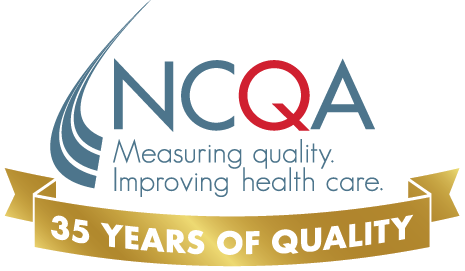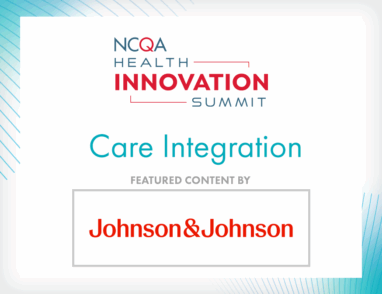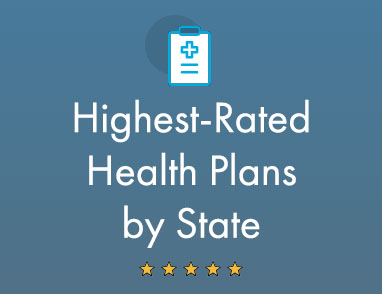“Living the Dream” With PCMH Recognition
August 21, 2025 · Guest Contributor
 Jeff Sitko, AVP, Product Management, NCQA
Jeff Sitko, AVP, Product Management, NCQAWe all know the United States has a primary care crisis. Practices struggle with resource challenges, new technologies and clinician and office staff burnout. Patients can’t access the care they need, when they need it.
If you ask a typical primary care clinician how things are going in their practice, they probably wouldn’t say they are living the dream—but there’s hope. NCQA’s Patient-Centered Medical Home (PCMH) Recognition program helps primary care practices deliver care more efficiently, which allows them to focus time and energy on what matters most: caring for their patients. The goal of the medical home model is to help clinicians practice at the top of their license and to create opportunities for practice staff to share their unique skills and talents.
What Is PCMH Recognition?
PCMH Recognition is the is the most widely adopted medical home evaluation program in the country. More than 10,000 practices and 50,000 clinicians are Recognized by NCQA. Recognition provides a blueprint for strong primary care infrastructure, drives actionable data use and enhances the patient experience.
Recognition program standards are organized in six key areas:
- Team-Based Care and Practice Organization.
- Knowing and Managing Your Patients.
- Patient-Centered Access and Continuity.
- Care Management and Support.
- Care Coordination and Care Transitions.
- Performance Measurement and Quality Improvement.
PCMH is not about checking boxes; it’s about process. If you buy a paintbrush at the hardware store and leave it on a shelf in your garage, it’s of no value to you—but as soon as you dip it in a can of paint, it becomes a tool. Similarly, primary care practices that use PCMH as a tool to restructure their day-to-day operations will realize the benefits.
What Are the Benefits of PCMH Recognition?
Every practice faces different challenges. PCMH provides a set of adaptable organizing principles that help primary care practices:
- Create an efficient operating structure. PCMH standards help primary care practices organize their workflows to help them prepare for a patient visit ahead of time. It’s like a ‘choose your own adventure’ model where practices decide how they want to implement the standards, based on what works best for them.
- Build a culture of improvement. PCMH creates a system of accountability that practices can use to improve quality: holding regular meetings, consistently evaluating quality measures and goals, identifying areas that need attention, developing tactics to make changes.
- Improve patient care. By defining workflows and focusing on continuous improvement, practices have seen notable improvement in patient outcomes. PCMH practices have shown a 9% increase in cervical cancer screenings and a 7% increase in breast cancer and colorectal cancer screenings.
- Lower costs. Implementing PCMH can help lower costs through better chronic care management, preventive medicine and coordination across care settings and transitions. PCMH practices have demonstrated $482.40 lower per capita spending1 and $5 million annual savings for 100,000 patients.2
- Align with value-based contracts. PCMH can make it easier to succeed in value-based care, and establish primary care practices as strong contracting partners for health plans and health systems.
What’s New in PCMH for 2026?
NCQA is investing in primary care by strengthening the PCMH program. We’ve added minimum frequency criteria to define how often practices should engage in key activities, clarified the requirements around measurement and heightened the focus on medication reconciliation and patient safety.
We’ve also added nine optional criteria that align with NCQA’s new Virtual Care Accreditation program: helping ensure that virtual care is appropriate for the patient’s needs, obtaining patient consent to treatment through virtual modalities, assessing the clinician and care team experience, setting goals and actions for improvement. PCMH provides a solid foundation for organizations that want to pursue Virtual Care Accreditation.
Looking to the Future: Advanced Primary Care
NCQA continues to evaluate the PCMH model’s relevance and usefulness for primary care practices, with the goal of focusing on outcomes associated with implementing the standards and sustaining practice transformation. That could mean fewer, more impactful standards that are consistent with a practice’s quality goals. We’re also exploring the role of networks in providing accountability, structure and crucial wraparound services for primary care practices, and how we can acknowledge their contributions.
Advanced Primary Care—the next stage in the life cycle of high-functioning primary care—builds on the vital PCMH foundation, and presents an opportunity to create better alignment between practices and health plans, reduce duplicate activities and clarify shared responsibilities. Care management is one area where health plans and primary care practices should have a shared care plan for high-risk patients—collaborating rather than duplicating efforts. If we can build trust and alignment among organizations, we can produce better outcomes and a more seamless patient experience.
Our customers and partners often express interest in a collaborative learning network where they can share best practices and ideas. This network may take time to build, but we know that the most valuable source of best practices is a primary care office doing the hard work to innovate and improve on the patient experience. We look forward to helping connect advanced primary care offices and creating a space to advance knowledge sharing.
Learn More
- View our webinar, PCMH Recognition: 2025 Updates and Beyond.
- Listen to our podcast, Why ‘Systemness’ Is the Key to Better Quality.
- Get the 2026 PCMH Standards and Guidelines in the NCQA Store.
- Register for our upcoming live course, PCMH Recognition Annual Reporting 2026: Continued Success.
New to PCMH? Contact us today to get started on your PCMH journey.

1 Department of Vermont Health Access/Vermont Blueprint for Health.
2 Rosenthal MB, et al. (2016). A Difference-in-Difference Analysis of Changes in Quality, Utilization and Cost Following the Colorado Multi-Payer Patient-Centered Medical Home Pilot.







